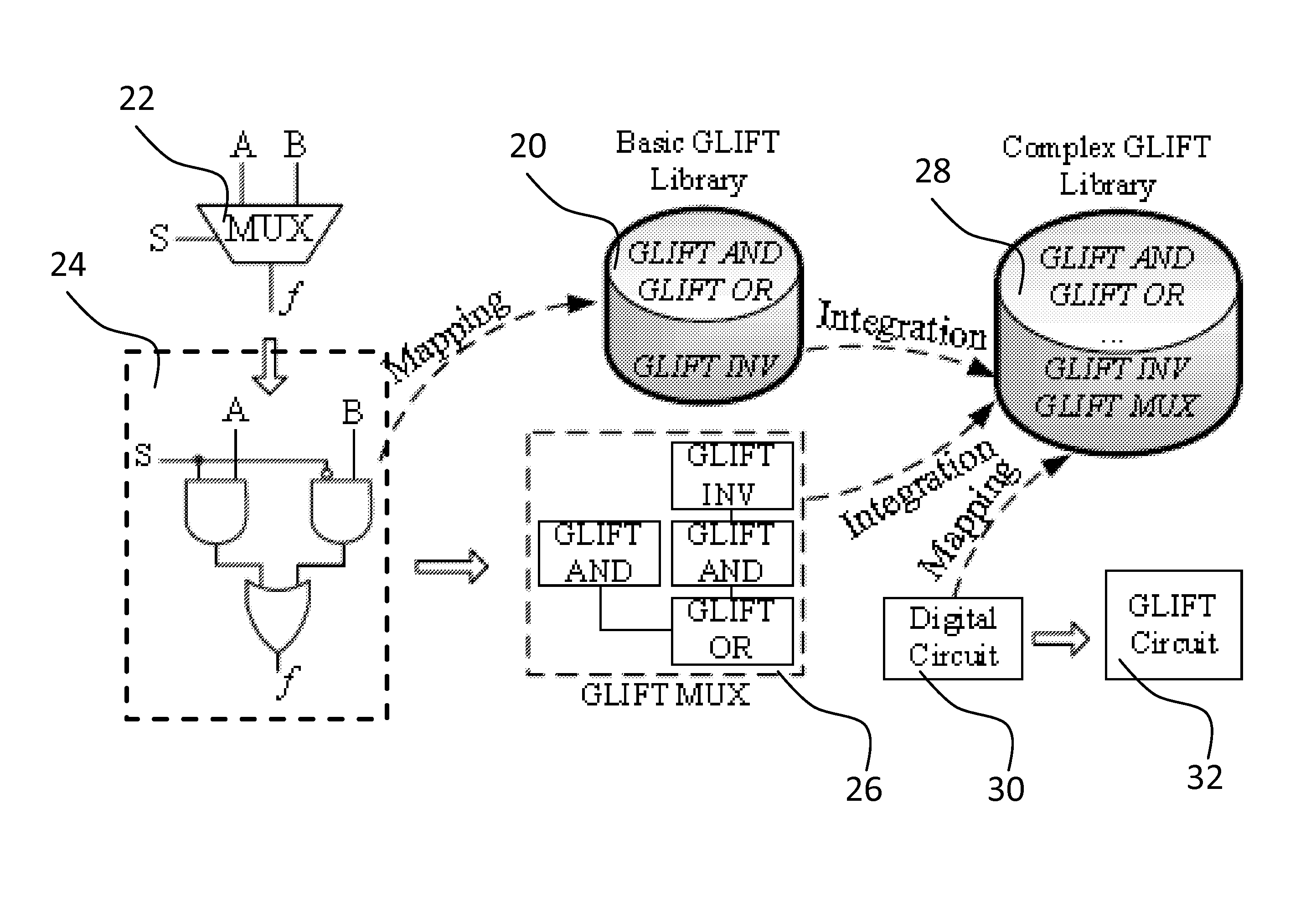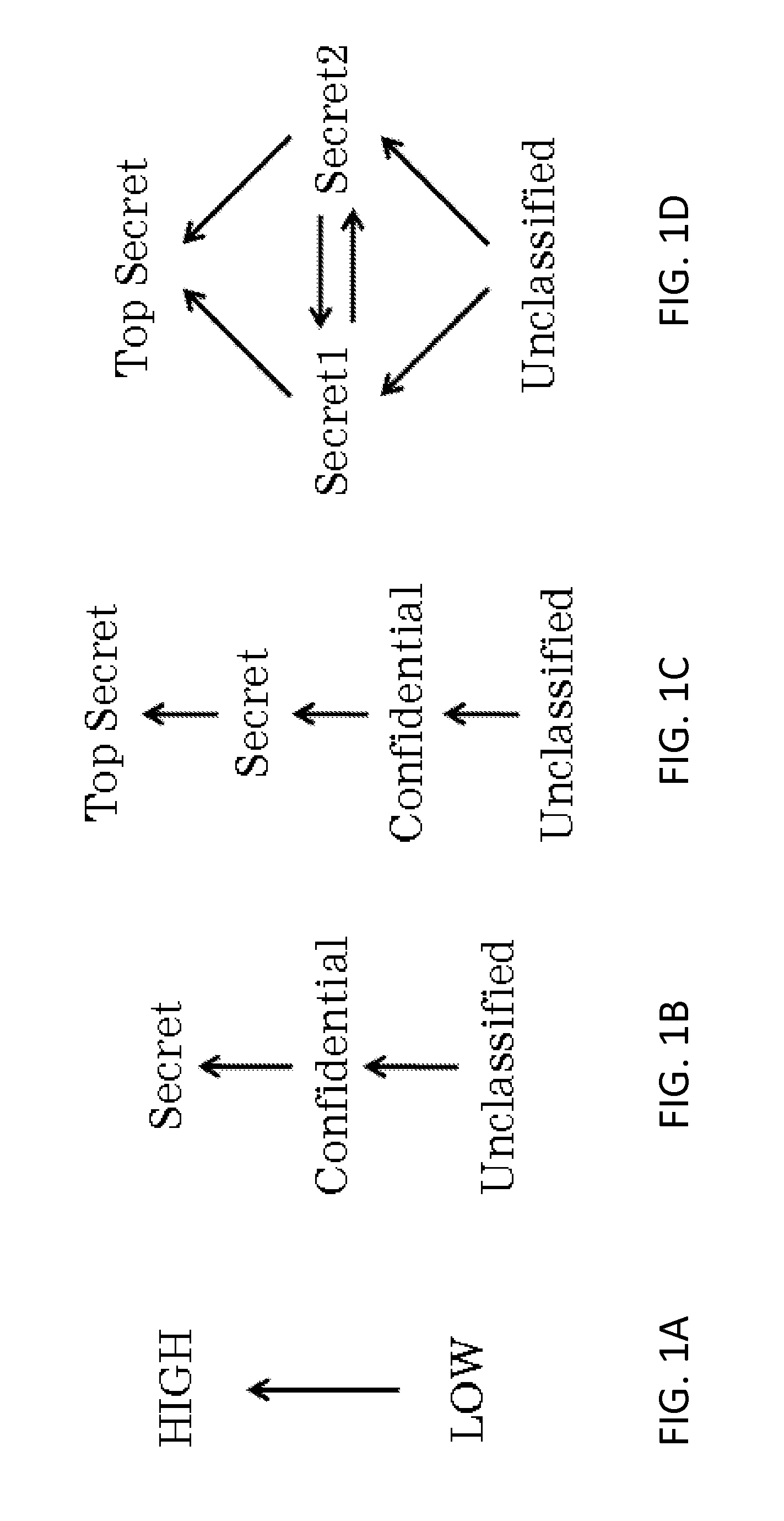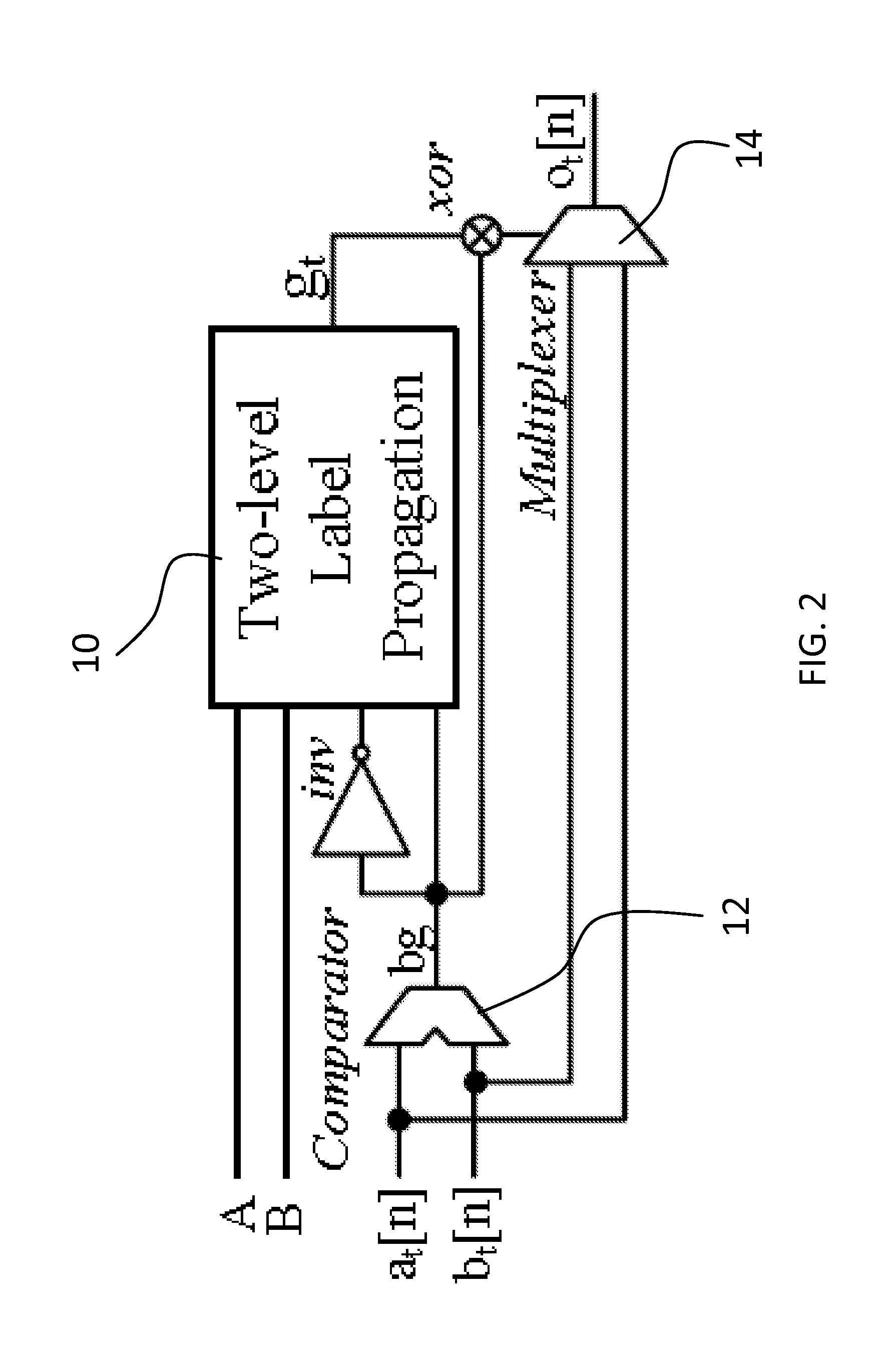Method and system providing mutli-level security to gate level information flow
a gate level and information flow technology, applied in the field of data security, can solve the problems of difficult detection, high cost in both monetary and human terms of security breaches, hardware designs that are insusceptible to timing channels,
- Summary
- Abstract
- Description
- Claims
- Application Information
AI Technical Summary
Benefits of technology
Problems solved by technology
Method used
Image
Examples
example three-level liner security
Lattice
[0036]Embodiments of the invention expand GLIFT to multi-level latices. To illustrate an example embodiment, example security classes, the ordering of the classes and bit encodings are defined. The process illustrates also how to expand to a general N-level linear lattice and a four-level square. In the example three-level linear security lattice, the security classes are SC={S0, S1, S2}. One can expand two rows and columns upon Table 1 to include label propagation rules defined for S2, which is shown in Table 2. This also indicates the compatibility and reducibility of label propagation rules among different linear security lattices.
TABLE 2GLIFT LABEL PROPAGATION RULES FOR AND-2 ON THETHREE-LEVEL LINEAR SECURITY LATTICE.AND(S0, 0)(S0, 1)(S1, 0)(S1, 1)(S2, 0)(S2, 1)(S0, 0)(S0, 0)(S0, 0)(S0, 0)(S0, 0)(S0, 0)(S0, 0)(S0, 1)(S0, 0)(S0, 1)(S1, 0)(S1, 1)(S2, 0)(S2, 1)(S1, 0)(S0, 0)(S1, 0)(S1, 0)(S1, 0)(S1, 0)(S1, 0)(S1, 1)(S0, 0)(S1, 1)(S1, 0)(S1, 1)(S2, 0)(S2, 1)(S2, 0)(S0, 0)(S2,...
PUM
 Login to View More
Login to View More Abstract
Description
Claims
Application Information
 Login to View More
Login to View More - R&D
- Intellectual Property
- Life Sciences
- Materials
- Tech Scout
- Unparalleled Data Quality
- Higher Quality Content
- 60% Fewer Hallucinations
Browse by: Latest US Patents, China's latest patents, Technical Efficacy Thesaurus, Application Domain, Technology Topic, Popular Technical Reports.
© 2025 PatSnap. All rights reserved.Legal|Privacy policy|Modern Slavery Act Transparency Statement|Sitemap|About US| Contact US: help@patsnap.com



